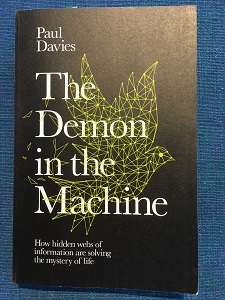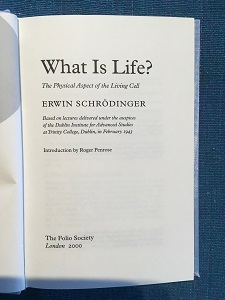Services at St Michael and All Angels (refer to smlcc.com.au for times)
Sunday 3 March, Quinquagesima
Colour: Red
Intent: The Holy Spirit as the Fire of Love

Sunday 10 March, Quadrigesima, 1st Sunday of Lent
Colour: Violet
Intent: Self-examination
Sunday 17 March, 2nd Sunday of Lent
Colour: Violet
Intent: Control of speech
Sunday 24 March, Archangel Gabriel, 3rd Sunday of Lent
Colour: White
Intent: Understanding
Sunday 31 March, 4th Sunday of Lent
Colour: Rose or violet
Intent: Spiritual refreshment
Sunday 7 April, Passion Sunday, 5th Sunday of Lent
Colour: Violet
Intent: Humility

Sunday 14 April, Palm Sunday, Sunday next before Easter
Colour: Violet
Intent: The triumphal entry to Jerusalem
What is Life?
When we try to define what life is we find that it is a very slippery concept, difficult to tie down in objective words. We think we know when something is alive. The very interesting aspect of this is that in the “something” that we think is alive we find the same chemicals that are in things that we think are inanimate.
When we consider “What is Life?”, by going back in history to the 17th century we can get an insight into where our scientific view has emerged from. There are very significant differences between Newton’s (1642-1726) ideas of what we call science and our modern (from 1925) ideas of science, especially in the light of quantum mechanics. In Newton’s scientific world view, and to the people of his time, if one wasn’t looking at the moon, there was no ambiguity in believing that the moon was still there. Since the physical senses were the main measurement tools, it was “obvious” that when you looked away from an object that you had just been looking at or measuring it was still there just as you had left it. In modern quantum mechanics, a fundamental principle of gaining information about a system is that the observer plays an essential role and is part of the system of measurement. That means that the system is undefined, i.e. we don’t know what it is doing when it is not being observed, not being measured.
In 1943, while residing in Trinity College Dublin, the quantum physicist, Erwin Schrödinger, wrote a book called “What is Life?” He recognised that while living organisms are self-directed and are the product of long periods of evolution, the atoms described by his quantum mechanics blindly followed well-established physical laws. Schrödinger concluded that we would need to develop new concepts which could describe the underlying processes before we could make any progress with the question, “What is Life?”.
 
In 2019 the physicist and cosmologist, Paul Davies, has published a book called “The Demon in the Machine” in which he revisits Schrödinger’s work. He attempts to advance the new concepts that Schrödinger was hinting at. Davies suggests that the underlying concept is “information” which he proposes is an abstract quantity like energy which has the ability to animate matter. He uses the concept of information to shed more light on what is the basis of Life from a scientific viewpoint.
How does the Liberal Catholic Church view the question of What is Life? In many ways the LCC supports Schrödinger’s conclusion that new ideas are needed to answer the question and also agrees in principle with Davies’ proposition that information flows are fundamental to establishing life. The LCC world view is that everything changes, nothing stands still and all matter is evolving and interacting “all with all”. Davies’ flow of information is represented in the LCC world as the life force emanating from the Christ imbued at the very heart of all matter.
The mathematics that is used in science, physics, quantum mechanics is full of symbols which carry the meaning of the world view of the scientist. In the Liberal Catholic Church we have a deep interest in the symbolism of the Eucharist and the other sacraments, which we use to deepen our understanding of our personal, spiritual evolution and our becoming ever more aligned with the path that leads to union with God. The symbolism that is used in all mystic traditions is often in the form of geometric shapes that appear to be so mundane that they can easily be overlooked by someone without the background information. For example, the six-pointed star is constructed with two triangles, one ascending and one descending. In spiritual terms this is God’s love coming down to enrich mankind’s life and mankind aspiring to lift themselves up to God.

The physicists and mathematicians who are struggling with defining the most fundamental building blocks of the universe have designated their model as “string theory”. This theory requires 11 dimensions for its full description. Most of us are happy with three spatial dimensions, and perhaps time as a fourth. I think it is interesting that the church’s understanding of the benefit of cooperation of the angels with mankind is equally not visible to human senses but can be too readily dismissed by physicists working with their 11 dimensions!
As Easter approaches, we welcome the opportunity that Easter brings for enhanced spiritual growth. The symbolism of Easter – palms, the cross, the tomb, resurrection provide a reminder to us on the path of spiritual evolution that the experiences which we contemplate at Easter are also a necessary part of our own path to union with God.
With God's blessing

|
|